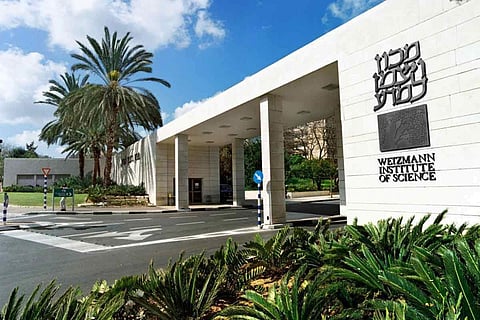

The Iran-Israel war is hitting new lows, causing catastrophic damage on either side. The damage inflicted by Iran’s missile strikes on the Weizmann Institute of Science is one of the countless devastations provoked by a ruthless war. The destruction came shortly after Iran raised an alarm to Israel and its allies, said a report by the Economic Times.
Two buildings and thousands of hours of study, research, and samples at the Weizmann Institute, located in Rehovot, went in vain after a deadly missile strike that took place two days ago.
How did the strike impact the research?
The Weizmann Institute of Science is known for its state-of-the-art research centre in the life sciences. The missile strike took a heavy toll on the institute’s 45 labs and years of unparalleled and irreplaceable research. This has called for scientists all over the world to come in unison to rebuild the institute wrecked in war.
The attack has taken a huge toll on the labs devoted to studying neurodevelopmental disorders, adult heart disease, and cancer. A report by Daily Express read: “crown jewel of Israeli science is destroyed in a devastating blow by an Iranian ballistic missile”.
Professor Oren Schuldiner, whose lab was destroyed, reportedly said, “It’s completely gone. Not a trace. Nothing can be saved”. Schuldiner, who devoted over 16 years to this lab, has now lost everything.
"This was the life's work of many people," said Schudiner, speaking to the Times of Israel, highlighting the rampant damage inflicted by the war on the years of research, which ended in a fraction of a second.
How is the Weizmann Institute significant?
Founded in 1934 and later named after Israel’s first president, the Weizmann Institute is a globally recognised research institution. It boasts three Turing Award winners, a Nobel laureate in chemistry, and a prolific output of academic publications. In 1954, it made history by creating Israel’s first computer.
The lab earned laurels after it restored heart tissue in mice in 2015 and introduced treatments for cancer, stroke, heart disease, and other medical conditions. The building now lies in rubble – in destruction beyond recovery.
Sarel Fleishmann, a professor of Biochemistry, who visited the location following the attack, said that many of the labs in Weizmann work on life sciences, with projects that are highly vulnerable to physical harm.
Many of the institute’s research efforts, spanning fields such as cancer, developmental biology, and tissue regeneration, have either come to a halt or have been severely disrupted due to the damage.
Among the nearly 45 labs destroyed was one focused on heart biology.
One professor’s lab, which housed over two decades of research along with invaluable scientific specimens, including genetic material and heart tissues, now lies in ruins.
“It’s very significant damage to the science that they can create and to the contribution they can make to the world,” the professor said.
Describing the broader impact, another professor noted that the institute stands as a symbol of “Israeli scientific progress,” and added that Iran’s attack reflects its mindset: “You harm our scientists, so we are also harming (your) scientific cadre”, stated the report.
